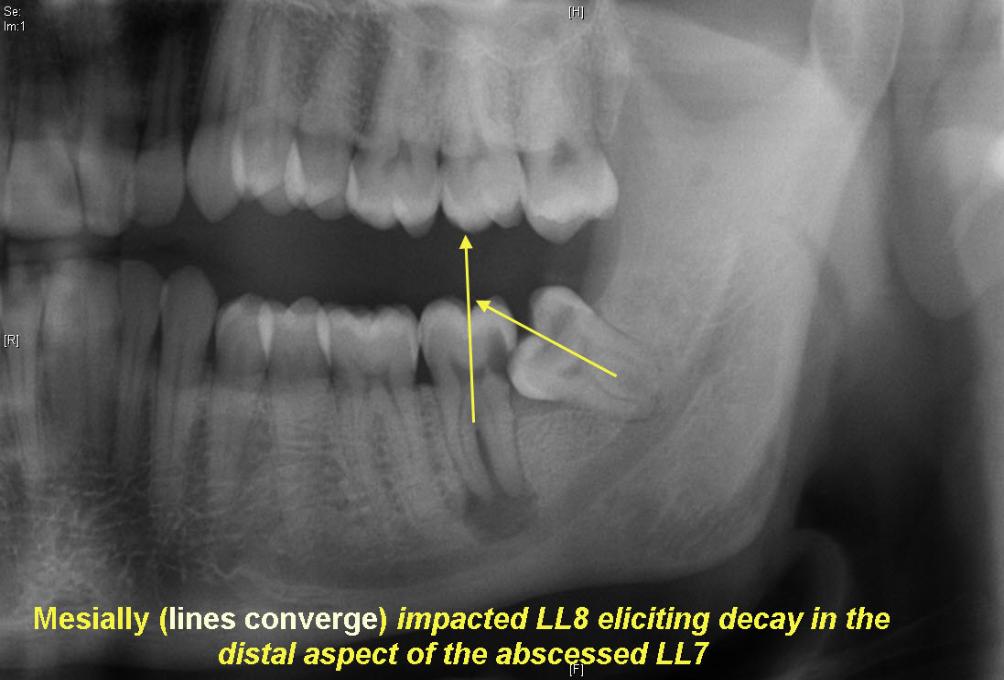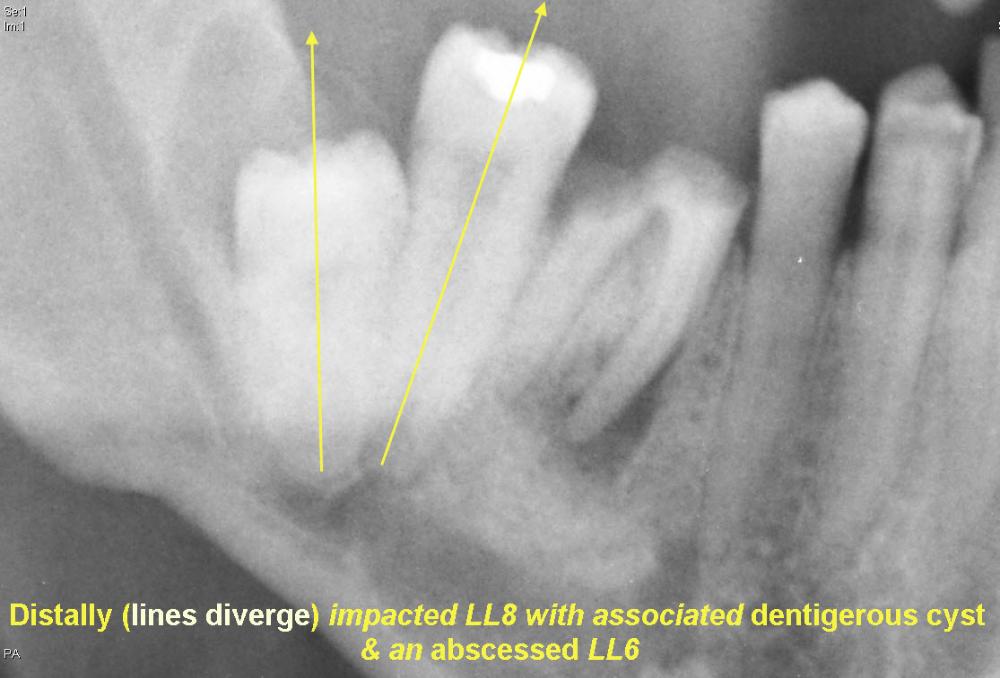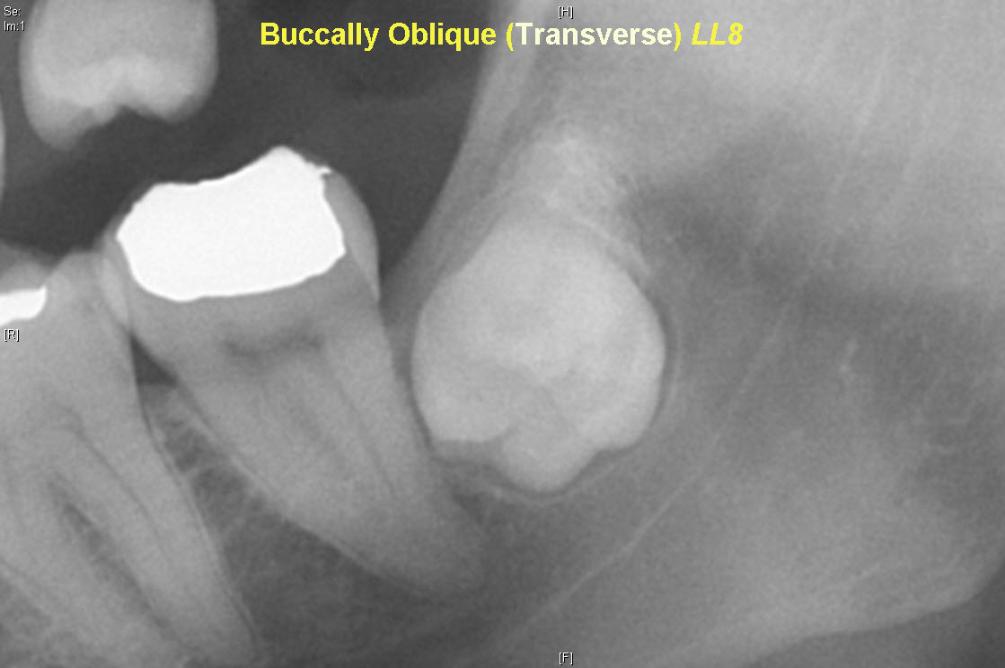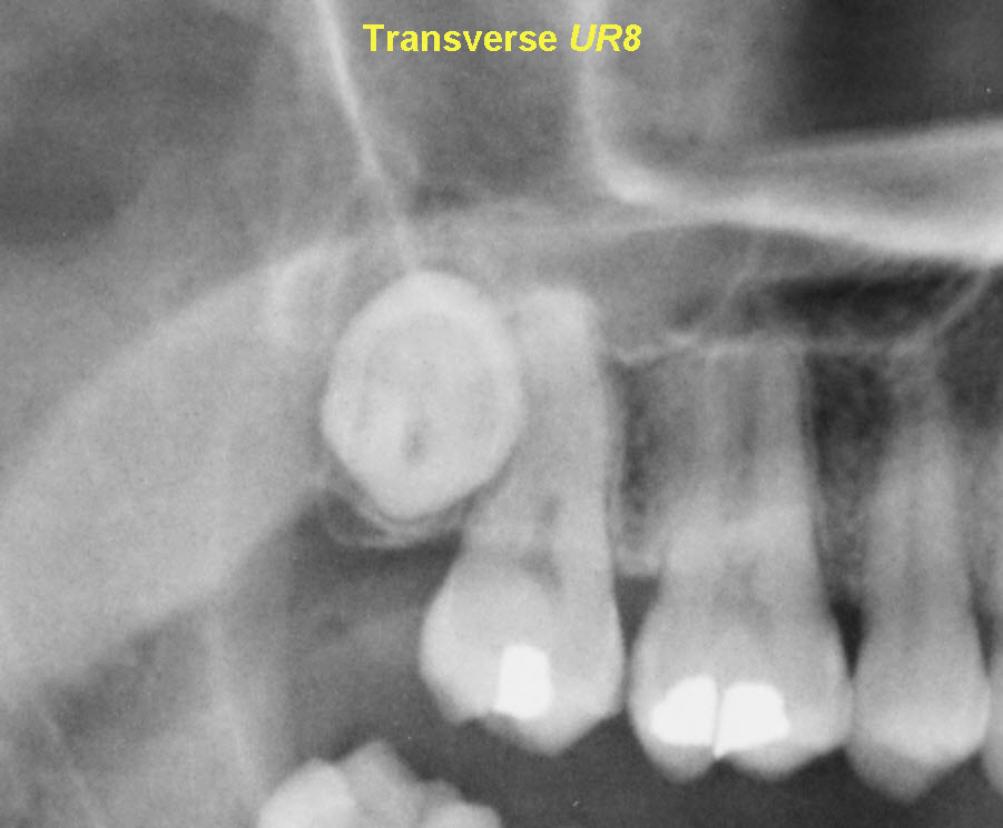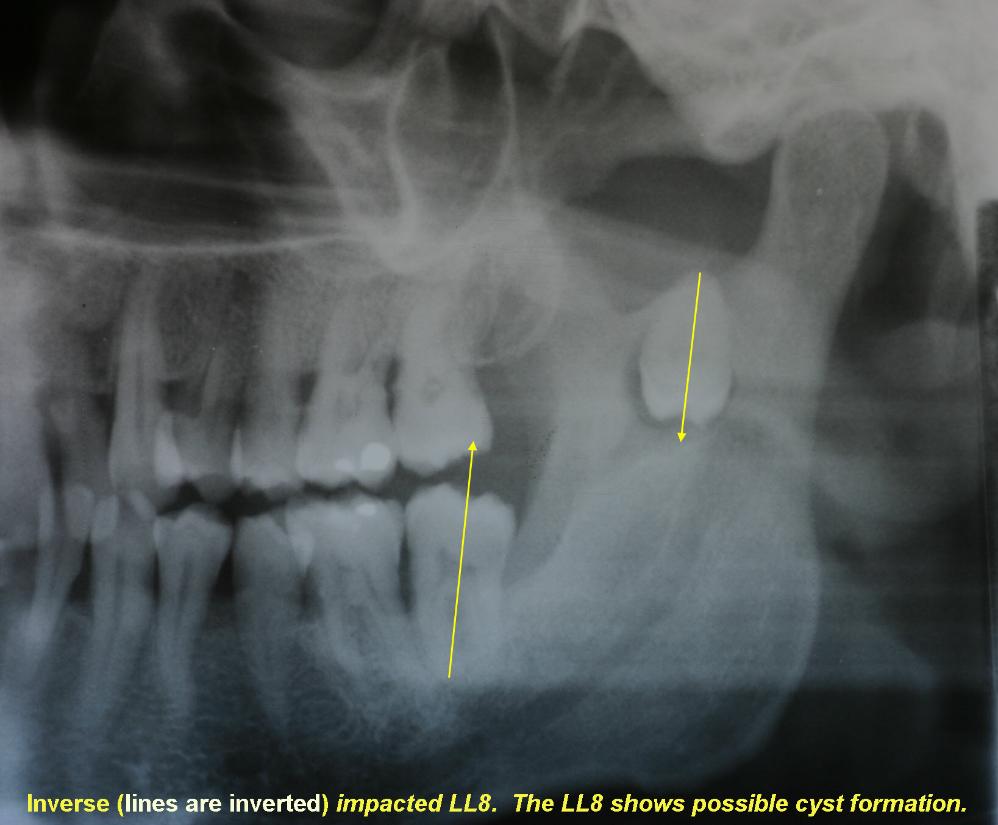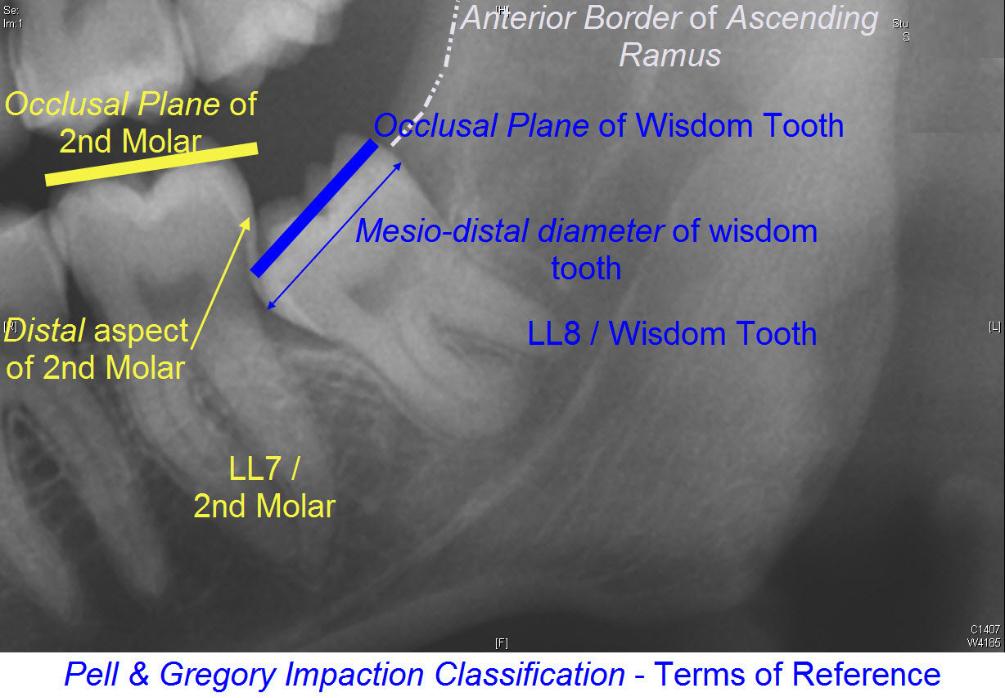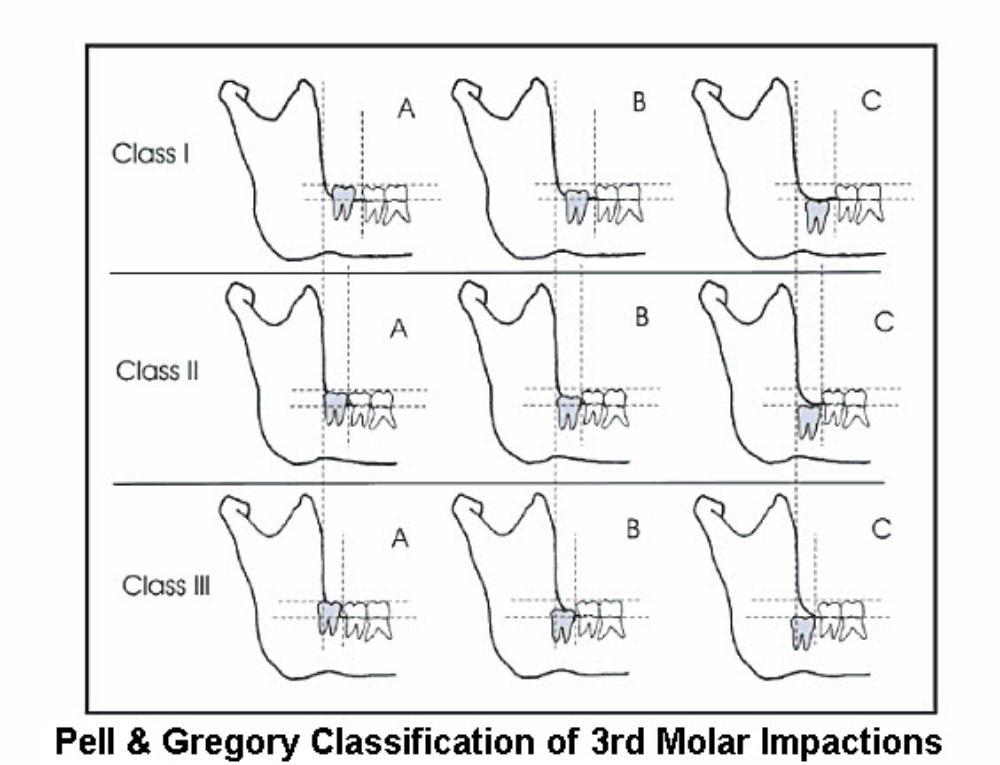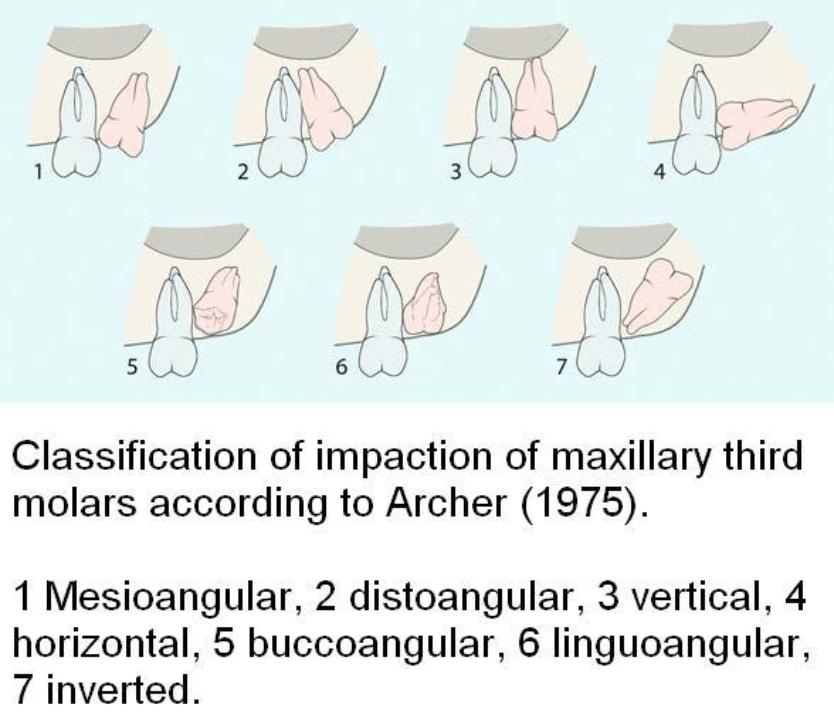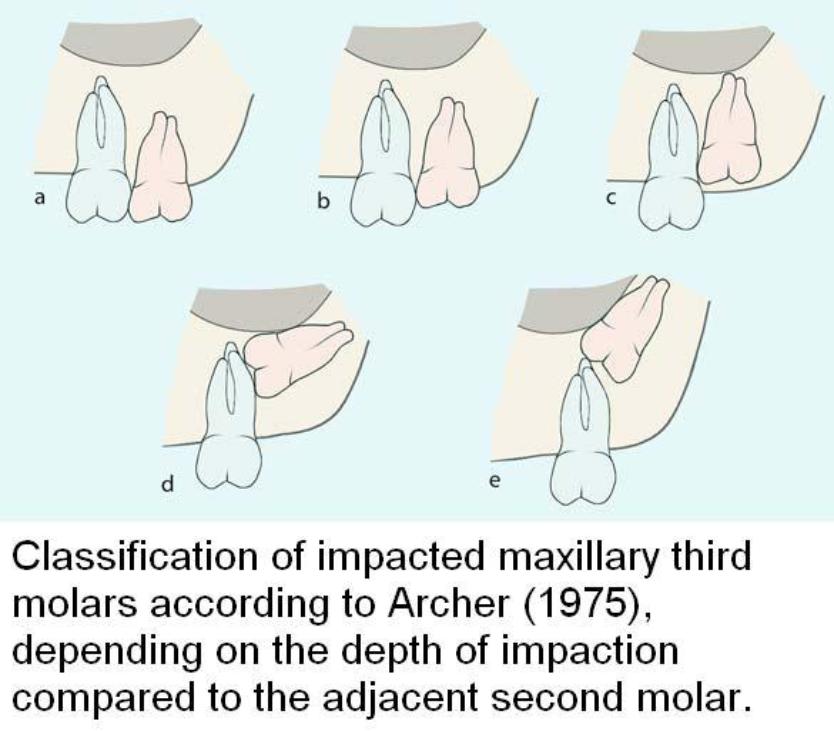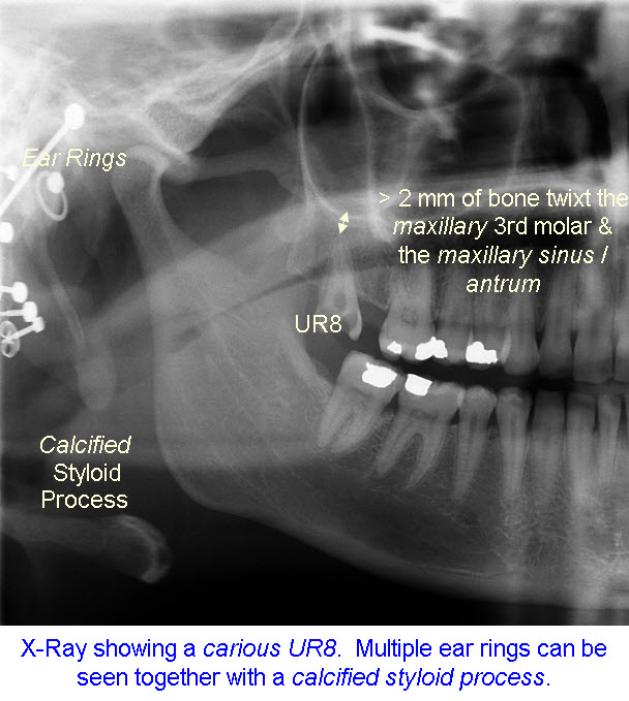Classification of 3rd Molar (Wisdom Teeth) Impaction
Systematic and meticulous classification of the position of impacted molar teeth helps in assessing the best possible path of removal of the impacted teeth and also in encountered during removal.
Prediction of operative difficulty before the extraction of impacted third molars allows a design of treatment that minimises the risk of complications. Both radiological and clinical information must be taken into account.
Factors such as sex, age, position of the molar tooth in relation to the occlusal plane and operative difficulty as judged by the surgeon, have all been reported to be associated with a significantly increased duration of postoperative recovery. It seems likely that patients judged to be at higher risk for delayed recovery will benefit from a more exhaustive postoperative follow-up and from specific post-operative measures to aid recovery.
Prediction of operative difficulty is therefore important for correct management. Various methods have been proposed for the pre-operative evaluation of difficulty but these have often been of limited validity. To overcoming the limitations of these systems, the classification systems can be used in conjunction with each other to determine the difficulty of removal of the impacted tooth
Classification of Impacted Mandibular 3rd Molars
- Based on the nature of the overlying tissues
- Winter’s classification
- Pell & Gregory’s classification
Based on the Nature of the Overlying Tissue
Based on the nature of the overlying tissue impaction, impacted lower wisdom teeth can be classified into:
- Soft Tissue Impaction. When the height of the tooth’s contour is above the level of the surrounding alveolar bone and the superficial portion of the tooth is covered only by soft (though this can be dense and fibrous) tissue. Soft tissue impaction is usually the easiest of type of impacted tooth to remove.
- Hard Tissue (‘Bony’) Impaction. This is where the wisdom tooth fails to erupt due to being obstructed by the overlying bone. This can be sub-divided into Partial and Complete Bony Impactions.
- Partial Bony. The superficial portion of the tooth is covered only by soft tissue but the height of the tooth’s contour is below the level of the surrounding alveolar bone. Apart from cutting the gingiva (gum) & possible bone removal from behind the tooth, the tooth’s roots may need to be divided.
- Complete Bony. The tooth is completely encased in bone so that when the gingiva is cut and reflected back, the tooth is not seen. Bone removal (large amounts) together with root sectioning will be needed to remove the tooth. These are often the most difficult tooth to remove.
Winter’s Classification
The classification is based on the inclination of the impacted wisdom tooth (3rd molar) to the long axis of the 2nd molar.
Pell & Gregory’s Classification
This is based on the relationship between the impacted lower wisdom tooth (3rd molar) to the ramus of the mandible (lower jaw) and the 2nd molar (based on the space available distal to the 2nd molar).
Class A. The occlusal plane of the impacted tooth is at the same level as the occlusal plane of the 2nd molar. (The highest portion of impacted 3rd molar is on a level with or above the occlusal plane).
Class B. The occlusal plane of the impacted tooth is between the occlusal plane & the cervical margin of the 2nd molar. (The highest portion of impacted 3rd molar is below the occlusal plane but above the cervical line of the of 2nd molar).
Class C. The impacted tooth is below the cervical margin of the 2nd molar. (The highest portion of impacted 3rd molar is below the cervical line of the of 2nd molar).
Class 1. There is sufficient space available between the anterior border of the ascending ramus & the distal aspect of the 2nd molar for the eruption of the 3rd molar.
Class 2. The space available between the anterior border of the ramus & the distal aspect of the of the 2nd molar is less than the mesio-distal width of the crown of the 3rd molar. It denotes that the distal portion of the 3rd molar crown is covered by bone of the ascending ramus.
Class 3. The 3rd molar is totally embedded in the bone of the anterior border of the ascending ramus because of the absolute lack of space. It is obvious that Class 3 teeth present more difficulty in removal as a relatively large amount of bone has to be removed and there is a risk of damaging the ID nerve or fracturing the mandible (or both).
Classification of Impacted Maxillary 3rd Molars
The classification of impacted maxillary 3rd molars is similar to those used for mandibular 3rdmolars.
Pell-Gregory Classification
Class A. The occlusal plane of the impacted tooth is at the same level as the occlusal plane of the 2nd molar. (The lowest portion of impacted 3rd molar is on a level with or above the occlusal plane).
Class B. The occlusal plane of the impacted tooth is between the occlusal plane & the cervical margin of the 2nd molar. (The lowest portion of impacted 3rd molar is below the occlusal plane but above the cervical line of the of 2nd molar).
Class C. The impacted tooth is below the cervical margin of the 2nd molar. (The lowest portion of impacted 3rd molar is below the cervical line of the of 2nd molar).
There is are no Classes 1 – 3 (as in the mandibular classification).
Winter’s Classification
- Vertical
- Horizontal
- Mesio-Angular
- Disto-Angular
- Inverted
- Bucco-version
- Linguo-version
- Transverse
These classifications have been revised / tweaked / conflated by Archer (1975) & Kruger (1984).

